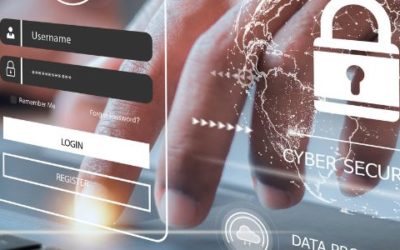Cybersecurity Attack Trends to Watch Out for in 2023
The new year has just begun, and now it’s time for renewal as we plan for the possibilities of 2023. It’s also the perfect time to prepare your business for resiliency in the face of ever-present cyber attacks.
Sixty-eight percent of surveyed business executives feel that cybersecurity risks are worsening. They have good reason to believe this, as attacks have become more sophisticated than ever before. What many fail to realize is large criminal organizations often perform these attacks. These criminal groups treat cyber attacks as they would a business.
The average number of global cyberattacks in 2021 increased by 15.1%.
Monitoring cyber attack trends is crucial to protect your company in the coming year. You’ll need to know what new methods hackers are using and what forms of attacks are increasing in volume. Knowing these things is essential. It helps you strengthen your IT security to mitigate data breaches or the risk of malware infections.
To prepare you best for the upcoming year, we’ve researched what security experts are expecting. Here are the cybersecurity attack trends you need to keep an eye on.
Cybersecurity Trends to Watch Out for
5G Device Cyber Attacks
For several years, the world has been buzzing about 5G, and it’s finally beginning to fulfill the promise of lightning-fast internet speed. As providers build the IT infrastructure, expect it to become a hot spot for attacks.
Bad actors are looking to take advantage of the 5G hardware used for routers, PCs, and mobile devices. Anytime you have a new technology such as this, it typically has some code vulnerabilities. This is exactly what hackers look for to exploit.
Prepare for these attacks by being aware of the firmware security in the devices you purchase. This is especially true for those devices enabling 5G. Some manufacturers build better firmware security into their designs than others. Be sure to ask about this when buying new 5G devices.
One-time Password (OTP) Bypass
This alarming new trend is designed to bypass one of the best methods of account security, Multi-factor authentication (MFA). MFA is known for preventing fraudulent sign-in attempts. It can block account takeovers even if the cyber criminal has the user’s password.
There are a few different ways hackers can attempt to bypass MFA. These include:
- Reusing a token: The bad actor gains access to a recent user One-Time Password and attempts to reuse it
- Sharing unused tokens: The hacker uses their personal account to get a One-Time Password. Then they attempt to use that password on a different account.
- Leaked token: Using a One-Time Password token leaked through a web application.
- Password reset function: The hacker uses phishing to trick the user into resetting their password. From here, they fool them into handing over their OTP via email or text.
World-Event Based Attacks
During the pandemic, cybercrime increased by roughly 600%. Large criminal hacking groups have realized world events and disasters are perfect windows of opportunity for capitalizing on profits.
They take advantage by launching phishing campaigns for these world events. Attacks will surface for everything from the latest hurricane or earthquake to the Ukrainian war. Unsuspecting people will often fall for these scams because they are distracted by the crisis.
People must be especially mindful of scams surrounding events like these. Bad actors will often use social engineering tactics like sad photos or “GoFundMe” pages describing tragic stories to play on emotions.
Mobile Device Attacks & Smishing
Mobile devices follow us just about everywhere we go these days. Cybercriminals love this ongoing direct connection to a potential victim. This is why mobile device-based attacks, including SMS-based phishing (aka “smishing”), are constantly emerging.
Many people are surprised to receive scam text messages to their personal numbers. But unfortunately, cellphone numbers are no longer as private as they once were. Hackers can easily buy lists of them online or on the dark web. Then they compose convincing fake texts to look like legitimate shipping notices or receipts. One wrong click on one of the embedded links is all it takes for an account or data breach.
Another cellular device attack to watch out for is mobile malware which is also increasing. During the first months of 2022, malware targeting mobile devices increased by nearly 500%. This is why ensuring that you have adequate mobile anti-malware and other protections on your devices, such as DNS filtering is vital.
Elevated Phishing Using AI & Machine Learning
These days, phishing emails take more effort to spot. In the past, you could easily identify which email was a scam since it almost always had spelling errors or grainy images. While some still do, most don’t.
Cybercriminal groups elevate today’s phishing using AI and machine learning. Not only will the email look identical to a real brand’s emails, but it is also typically personalized. Hackers use these scamming tactics to capture more victims. These tools also enable hackers to deploy more targeted phishing email messages in less time than in previous years.
Cybersecurity Trends to Watch Out for
Perform a Cybersecurity Evaluation on Your Business
Is your business prepared for the cyber threats that will be emerging in 2023? Don’t wait to find out if you are the hard way! Call us and schedule a cybersecurity evaluation to stay one step ahead of these clever digital criminals.
Schedule a Cybersecurity Evaluation Today!
You might also like
The 5 Symptoms of Bad I.T. Plaguing Your Business
Welcome to the Network Computer Pros technology clinic, where we diagnose and treat the I.T....
IT Billing Model: 6 Major Benefits of Fixed-Rate Services
Managed IT Services offer significant advantages over traditional hourly billing for businesses in...
Latest LastPass Scam: Everything you should know
Understanding and Protecting Yourself from the Latest LastPass Scam After a sophisticated...



